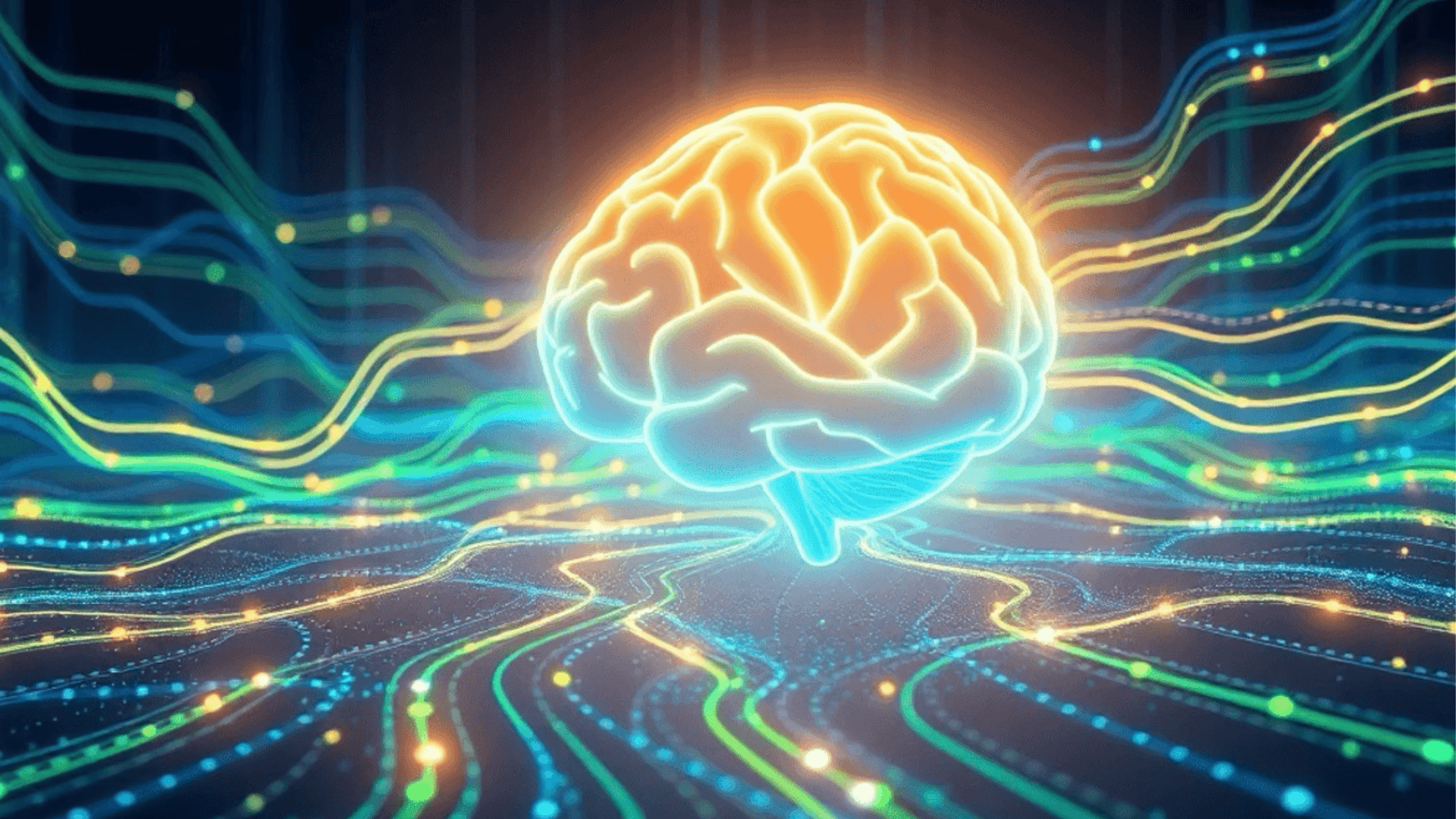Real-Time Streaming + AI: Smarter Event Processing
Real-time streaming and AI are changing the way businesses handle and understand data. When used together, they turn raw data into valuable insights at incredible speeds.
AI
Akivna Technologies
8/8/20258 min read

What is Real-Time Streaming?
Real-time streaming refers to the continuous flow of data being processed as soon as it's created. This can include various sources such as:
Financial transactions
IoT sensor readings
Social media feeds
Website clickstream data
How Does AI Fit In?
When combined with AI, this streaming data becomes extremely valuable. Here's how it works:
Data Generation: Data is generated from various sources in real-time.
Streaming Processing: The data is processed immediately using streaming technologies.
AI Analysis: AI algorithms analyze the data on-the-fly, identifying patterns and anomalies.
Decision Making: Based on the analysis, automated decisions can be made without human involvement.
This integration of real-time streaming and AI brings about several benefits:
Instant Analysis: The ability to process millions of events per second
Smart Decision Making: AI algorithms that learn and adapt in real-time
Automated Responses: Immediate actions triggered based on detected patterns
Continuous Learning: Ongoing data analysis leading to improved accuracy
These advancements are transforming industries by enabling them to shift from reactive decision-making to proactive strategies. As a result, businesses can now operate more intelligently, quickly, and efficiently while adapting to changes in real-time.
Understanding Real-Time Streaming and Event Processing
Real-time streaming represents a continuous flow of data from various sources, processed instantly as it arrives. Think of it as a constant river of information - from social media feeds to IoT sensor readings - analyzed and acted upon without delay.
Key Components of Event Stream Processing Platforms
Event Stream Processing Platforms handle this data flow through several key components:
Data Ingestion Layer: Captures raw data streams from multiple sources
Processing Engine: Analyzes incoming data on-the-fly
Storage System: Maintains state and historical data when needed
Output Interface: Delivers processed results to downstream applications
The Role of Complex Event Processing (CEP)
Complex Event Processing (CEP) adds intelligence to this streaming architecture. CEP systems identify meaningful patterns across multiple data points, creating higher-level insights from simple events. A single login attempt might seem innocent, but CEP can detect suspicious patterns like:
Multiple failed attempts across different locations
Unusual timing of access requests
Combination of various risk indicators
The power of CEP lies in its ability to process events within microseconds, enabling real-time responses to complex situations. Modern CEP platforms use sophisticated algorithms to:
Detect anomalies in system behavior
Identify correlations between seemingly unrelated events
Trigger automated responses based on predefined rules
These capabilities make CEP essential for applications requiring instant decision-making, from fraud detection in financial transactions to predictive maintenance in manufacturing systems. The technology excels at handling time-sensitive operations where traditional batch processing falls short.
How Real-Time Streaming Platforms Achieve Low Latency
Real-time streaming platforms achieve low latency through distributed processing architectures and in-memory computing. They maintain data consistency while processing millions of events per second, making them ideal for mission-critical applications where delay isn't an option.
The Role of AI in Enhancing Event Processing
Artificial Intelligence transforms traditional event processing into a dynamic, self-learning system capable of handling complex scenarios in real-time. By integrating AI with streaming data platforms, organizations unlock advanced capabilities that go beyond basic rule-based processing.
AI-Powered Pattern Recognition
Deep learning models identify subtle patterns across multiple data streams
Neural networks detect anomalies that rule-based systems might miss
Real-time classification of events based on historical and current context
Adaptive Learning Capabilities
Models automatically adjust to changing data patterns
Continuous learning from new events improves accuracy over time
Dynamic threshold adjustments based on seasonal variations and trends
The integration of machine learning with streaming data creates intelligent systems that can:
Predict equipment failures before they occur
Detect fraudulent transactions in milliseconds
Optimize resource allocation in real-time
Identify security threats across multiple endpoints
Automated Decision Making
AI-driven automation enables instant responses to complex events:
Event Detection → Analysis → Decision → Action
These systems handle sophisticated scenarios like:
Multi-factor fraud detection in banking transactions
Real-time bidding adjustments in advertising platforms
Predictive maintenance alerts in manufacturing systems
Dynamic pricing updates in e-commerce platforms
Advanced Pattern Recognition
AI models process multiple event streams simultaneously, identifying correlations that human analysts might overlook. These systems excel at:
Detecting subtle behavioral changes
Identifying emerging trends
Recognizing complex event sequences
The combination of AI and streaming data creates self-improving systems that learn from each processed event, continuously enhancing their detection and response capabilities. These intelligent systems scale effortlessly across different use cases, from financial services to industrial operations.
Use Cases Across Industries
Real-time streaming combined with AI powers transformative applications across multiple sectors, delivering immediate value through smart event processing.
Manufacturing Analytics
Predictive maintenance systems analyze sensor data streams to detect equipment anomalies before failures occur
Production line optimization through real-time quality control monitoring
Supply chain visibility with instant tracking of inventory movements and production status
Energy consumption optimization based on real-time usage patterns
Financial Services
Real-time fraud detection systems process millions of transactions per second
Market trading algorithms that adapt to changing market conditions instantly
Credit risk assessment through continuous monitoring of customer behavior
Anti-money laundering (AML) detection using pattern recognition across multiple data streams
IoT Environments
Smart city applications processing sensor data for traffic management and public safety
Connected healthcare devices monitoring patient vital signs and triggering automated alerts
Agricultural systems adjusting irrigation and fertilization based on real-time soil conditions
Industrial IoT platforms managing thousands of connected devices and their operational states
Each industry leverages specific capabilities of real-time streaming and AI:
Manufacturing systems utilize predictive algorithms to reduce downtime by up to 50% while improving product quality through continuous monitoring.
Financial institutions process up to 100,000 transactions per second, identifying fraudulent activities with 99.9% accuracy using AI-powered pattern recognition.
IoT deployments handle millions of sensor readings, converting raw data into actionable insights within milliseconds. Smart buildings alone can reduce energy consumption by 30% through real-time optimization.
These implementations demonstrate how Real-Time Streaming + AI creates tangible business value through automated decision-making and instant response capabilities.
Key Technologies and Platforms Enabling Smarter Event Processing
Several powerful platforms lead the market in combining real-time streaming capabilities with AI integration. Here's a deep dive into the key technologies shaping smart event processing:
1. SAS Event Stream Processing
Key features:
Native AI and machine learning integration
Real-time analytics with sub-millisecond latency
Built-in data quality management
Pattern detection across multiple data streams
Visual interface for stream processing workflows
2. Confluent Cloud for Apache Flink
Key features:
Serverless stream processing architecture
Advanced windowing capabilities for temporal analysis
Exactly-once processing semantics
Scalable stateful computations
Built-in ML libraries for streaming analytics
3. Ververica Unified Streaming Data Platform
Key features:
Enterprise-grade Apache Flink distribution
Automated savepoints and checkpoints
Dynamic scaling capabilities
Advanced state management
Production-ready ML pipelines
These platforms share essential features that enable sophisticated event processing:
Stateful Processing: Maintaining contextual information across time windows
High Throughput: Processing millions of events per second
Low Latency: Real-time response capabilities in milliseconds
Fault Tolerance: Automated recovery and data consistency
Scalability: Dynamic resource allocation based on workload
The integration of AI capabilities within these platforms enables:
Real-time model scoring
Continuous model training
Automated feature engineering
Adaptive learning from streaming data
Complex pattern recognition
These technologies provide the foundation for building robust event processing systems that can handle enterprise-scale data streams while maintaining performance and reliability.
Benefits of Combining Real-Time Streaming with AI
The combination of real-time streaming and AI brings together two powerful technologies that can greatly improve business operations. By using these technologies together, organizations can gain significant advantages in fast-paced markets where staying competitive is crucial.
1. Enhanced Operational Efficiency:
Automated decision-making reduces manual intervention
Resource allocation optimizes in real-time based on current demands
System maintenance schedules adjust dynamically to prevent downtime
Rapid identification and resolution of bottlenecks
2. Proactive Problem Resolution:
AI models detect subtle patterns indicating potential issues
Systems intervene before problems escalate
Reduced downtime through predictive maintenance
Lower operational costs by preventing resource waste
3. Real-Time Business Intelligence:
Instant conversion of raw data into actionable insights
Dynamic pricing adjustments based on market conditions
Personalized customer experiences through real-time behavior analysis
Immediate response to market trends and opportunities
4. Risk Management Benefits:
Early warning systems for potential security threats
Real-time fraud detection and prevention
Automated compliance monitoring
Instant alerts for regulatory violations
The integration enables businesses to shift from reactive to proactive operations. AI-powered streaming analytics identify opportunities and threats as they emerge, allowing organizations to capitalize on favorable conditions and mitigate risks before they materialize. This predictive capability drives operational excellence and creates competitive advantages through faster, more informed decision-making.
Moreover, the role of AI is particularly significant in sectors like finance, where it not only streamlines operations but also offers a wealth of insights through real-time data analytics. These insights can lead to more sustainable practices and improved decision-making processes, as highlighted in this sustainability study.
Challenges and Considerations in Implementing Real-Time Streaming + AI Solutions
Implementing Real-Time Streaming + AI solutions presents specific technical hurdles that organizations must address for successful deployment:
1. Data Volume Management
Handling massive data influx requires robust infrastructure scaling
Resource allocation needs constant optimization to maintain performance
Storage systems must adapt to varying data velocities and volumes
2. Latency Control Challenges
Network bottlenecks can impact real-time processing capabilities
Complex AI models may introduce processing delays
Multi-step analytics pipelines need careful optimization
3. Model Training and Updates
Live model updates require sophisticated deployment strategies
Training data quality affects model accuracy in real-time
Version control becomes critical for model management
4. Technical Infrastructure Requirements
High-availability systems need redundancy planning
Load balancing across distributed systems
Fault tolerance mechanisms for uninterrupted operations
5. Resource Optimization
CPU and memory usage must be carefully monitored
Network bandwidth allocation requires strategic planning
Storage capacity needs continuous assessment
Organizations implementing these solutions face the challenge of maintaining system stability while processing high-velocity data streams. The infrastructure must support both the streaming component and the AI processing requirements without creating bottlenecks or system failures.
Successful implementations require careful attention to system architecture design, ensuring each component can scale independently while maintaining data consistency and processing speed. Teams must develop strategies for graceful degradation during peak loads and implement robust monitoring systems to detect potential issues before they impact operations.
In such scenarios, an understanding of data engineering becomes crucial. It involves managing data flow efficiently, optimizing storage, and ensuring data quality for effective AI model training. Additionally, the integration of AI into these systems opens up new avenues for data analysis, providing deeper insights and improving decision-making processes.
Future Trends in Smarter Event Processing with Real-Time Streaming and AI
The Impact of Edge Computing on Real-Time Streaming and AI
Edge computing integration represents a significant shift in real-time streaming and AI architectures. By processing data closer to its source, organizations can achieve:
Reduced latency - Processing events at the edge eliminates network delays
Lower bandwidth costs - Only relevant data gets transmitted to central systems
Enhanced privacy - Sensitive data stays local to where it's generated
Improved reliability - Systems continue functioning even with network disruptions
Use Case: Edge AI in Smart Factories
Edge AI deployment enables smart factories to process sensor data instantly, allowing manufacturing equipment to make split-second adjustments without waiting for central server responses.
The Role of Federated Learning in AI Model Training
Federated learning brings a revolutionary approach to AI model training across distributed data streams. This technique:
Trains models locally on edge devices
Shares only model updates, not raw data
Aggregates learning across multiple sources
Preserves data privacy and regulatory compliance
Real-World Applications of Federated Learning
Real-world applications include:
Healthcare networks collaboratively training diagnostic models while keeping patient data secure
Smart cities improving traffic prediction models across multiple intersections
Financial institutions detecting fraud patterns across different branches
The Synergy of Edge Computing and Federated Learning
The combination of edge computing and federated learning creates resilient, privacy-preserving systems that learn continuously from distributed data sources while maintaining rapid response times for critical applications.
Conclusion
The combination of real-time streaming and AI is a game-changer for event processing. It takes unprocessed data streams and turns them into valuable information, allowing businesses to make quick decisions with incredible precision.
This powerful technology is making a difference in various industries:
Manufacturing: Factories can now identify equipment failures before they happen.
Finance: Banks and financial institutions can stop fraudulent transactions in milliseconds.
IoT networks: Internet of Things networks can automatically optimize device performance.
Healthcare: Medical systems can monitor patient vitals and initiate immediate interventions.
With AI-powered real-time streaming, we are entering an era of intelligent automation. In this new world, systems go beyond simply processing events. They comprehend the context, learn from patterns, and take independent actions. As organizations continue to generate massive amounts of data, the ability to instantly process and act upon this information becomes a crucial advantage over competitors.
The future of event processing lies in these intelligent and agile systems that convert raw events into meaningful insights. This transformation will drive innovation and efficiency across various industries.
Contact us
Whether you have a request, a query, or want to work with us, use the form below to get in touch with our team.


Registered Office
FF460A, Fourth Floor, JMD Megapolis, Sohna Road, Sector 48, Gurugram, Haryana, India -122018
© 2025, AKIVNA TEchnologies Private LIMITED
Contact Us
Support Email : info@akivna.com Careers Email : hr@akivna.com

Connect Us


